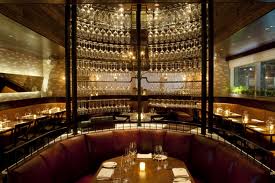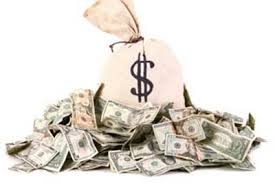In our previous post, we discussed the ways in which liquor cost impacts your pricing decisions. However, liquor cost is not the only factor that goes into this decision. Bar-i has worked with more than 60 bars and restaurants, and this extensive experience provides us with a great perspective on the elements that must be considered when determining your prices.
In many ways, the question "what is a good price point for alcohol sales?" is problematic. It is too complicated of a problem to be distilled into a simplistic answer. Instead, it is important to discuss a variety of answers since there is a broad range of what constitutes a good price point. Ultimately, the nature of your business will determine how each individual element should be weighed.
High End vs. Low End Bars
A high end bar is a much different type of place than a dive bar or a fast-casual establishment. Therefore, price point will be much different.
High end bars typically have higher purchasing costs due to a nicer selection and product mix. For example, well drinks in high end bars will use better liquor than well drinks in low end bars, increasing the purchase cost of the alcohol you carry.
However, high end establishments typically charge more for their products, and higher prices generally lead to lower liquor cost. Many of our successful bars have a liquor cost ranging from 16% to 26%. It seems that the bars which tend to hover around the 16% range are typically high end bars because they can add value by mixing products together in a clever way to increase their price. This is particularly true for bars which create craft cocktails.
Understanding How Volume Impacts Pricing
Volume helps with purchase leverage and leads to lower costs. Most bars don't take advantage of this enough, mainly due to having too large of a product selection. When you have a large product selection, it results in buying small amounts of many products rather than larger quantities of a few products. If you can reduce your product selection, you'll use more of each product.
We recommend carrying a certain mix of products for six months. After that time, evaluate how much of each product you used over the six month period to determine how much you need to purchase for the next six month period. For example, if you used 57 cases of well vodka over a six month period, you can confidently order that same amount for the next six months. This allows you to go to your distributor and tell them you want to order 57 cases of well vodka for the next six months. When asking for this large of a quantity, it gives you greater leverage on securing the best possible price.
Reducing product selection and keeping the menu constant for a set period of time allows you to invite quotes from different distributors on a fixed amount of product over a large period of time. Ultimately, this will put you in a strong position to reduce your costs.
The Balance between Sales and Margin
In general, the two elements sales and margin work against each other. If you have high prices, you'll have a high margin. However, you may turn away some price-sensitive customers, and this will lower your sales. Conversely, if you have low prices, you'll have a lower margin, but you will most likely attract more customers and increase sales.
It is important to think in terms of profits, which is a combination of these two elements (profits = margin x sales). Since you are trying to maximize profits, you need to create a pricing strategy that maximizes both of these elements. This occurs when you price your drinks at a level that gives you a reasonable margin while attracting new customers (which will boost sales).
If you run promotions that just provide your regulars with cheaper drinks, you are just eating into your margin, which will ultimately lower your profits. Therefore, you need to run promotions that will attract additional customers so that the boost in sales offsets the reduced margin.
As you can see, pricing is never straightforward. Instead, it varies based on the unique situation of your bar.
It’s All about Profits
Ultimately, the goal of every bar is to make a profit. The more you are able to maximize your profitability, the more successful you will be. Therefore, any discussion of pricing must be framed in terms of profits.
In our post The 5 P’s of a Profitable Pub, we provided a detailed explanation of the 5 elements which impact your profitability:
• Pricing
• Product mix
• Purchase price
• Promotions
• Portioning
Of these elements, pricing is perhaps the most important and most difficult to optimize. Pricing is a very strategic variable, and as a result there is no one right answer for establishing the right price point at your bar.
When opening a new bar, you must first get busy before you can make money. In the early goings of a new bar, your biggest priority is to generate business and get people into your bar. Without customers, there are no profits.
A good starting point is to research your competitors to find out what they charge. If your establishment is a bit nicer than your competitors, then you may want to charge a little more than they do. If you are more of a low end bar than some of your competitors, then you may want to adjust your prices accordingly.
This is a delicate balancing game. You don’t want to set your prices so high that people don’t come to your bar. However, you also don’t want to set them so low that they prevent you from making a profit.
You will need to analyze your sales data in detail on a regular basis. If you are only looking at overall liquor cost, you won’t be able to achieve the actionable data necessary to maximize your profits. Therefore, you need to use a more sophisticated liquor inventory system which allows you to analyze the performance of each individual product you sell.
Bar-i’s liquor inventory system provides you with the actionable data necessary to reduce liquor costs, establish an effective pricing structure, and maximize your profits. We encourage you to download our free liquor cost calculator. This tool will allow you to price out any type of drink served at your bar, giving you an edge when trying to determine the right price point to maximize profits.
To find out how a modern liquor inventory system can benefit your bar and help you maximize profits, please contact Bar-i today to schedule your free consultation. We provide services to bars nationwide from our offices in Denver, Colorado.



